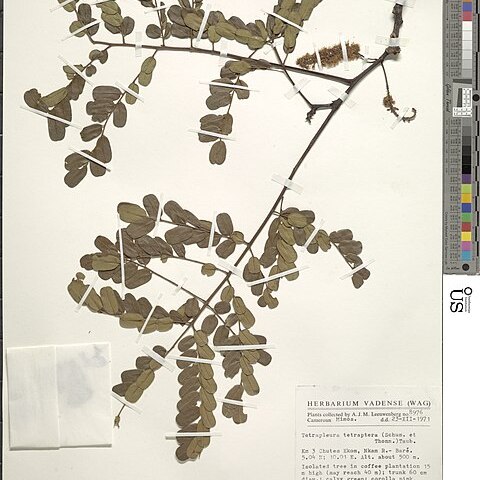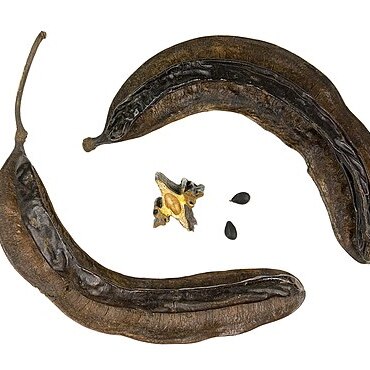Tree 6–30 m. high.. Bark smooth to rather rough, grey or brown.. Young branchlets glabrous or almost so.. Leaves: petiole 4–11 cm. long, glabrous to puberulous; rhachis 7.5–23 cm. long, puberulous; pinnae 5–7(–10) pairs, opposite to alternate; leaflets 6–11(–13) on each side of a pinna, oblong-elliptic to elliptic, (0.4–)0.65–2.1 cm. long, (0.3–)0.55–1.3 cm. wide, rounded to emarginate at apex, appressed-puberulous beneath, glabrous or almost so above, on petiolules 0.5–0.7(–1) mm. long.. Racemes 4–14 cm. long, on peduncles 1.5–4 cm. long; pedicels 1–3 mm. long, puberulous.. Flowers yellowish to pinkish.. Calyx ± puberulous, 0.5–1 mm. long.. Petals 2–3.5 mm. long, 0.5–0.9 mm. wide, puberulous outside towards apex, or rarely glabrous.. Stamen-filaments 2.5–4.5 mm. long.. Pods 12–23(–25, fide F.C.B.) cm. long, 3.5–5.7(–6.5) cm. wide, dark brown, glossy, rounded and sometimes emarginate at apex.. Seeds 9–9.5 mm. long, 7–8 mm. wide and 3.5–4 mm. thick.. Fig. 8, p. 31.
Flowers creamy or pink, turning orange
A forest tree, to 80 ft, high
Dark green fern-like foliage
Fruits dark purple-brown.



